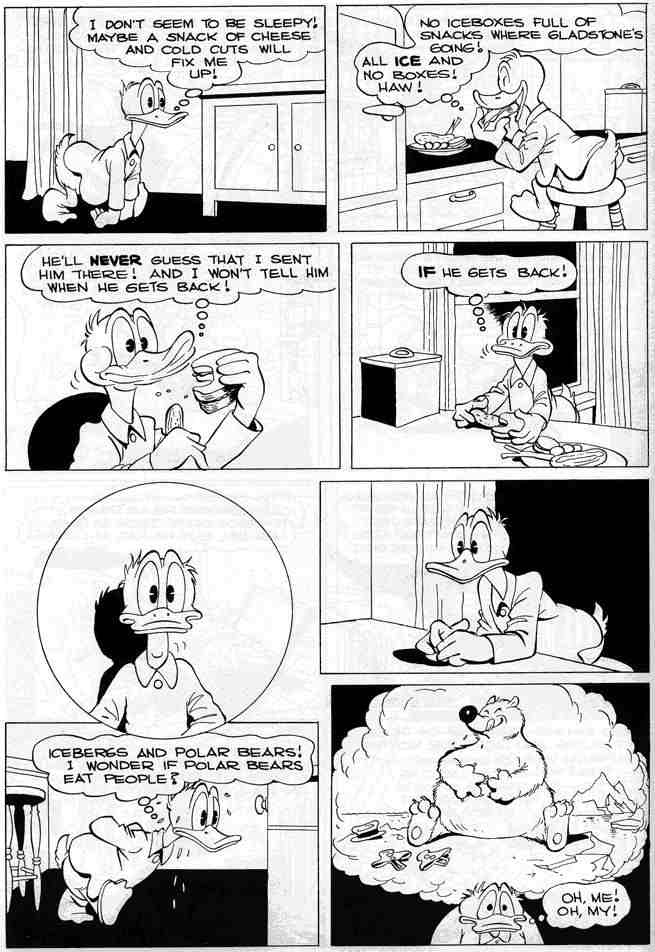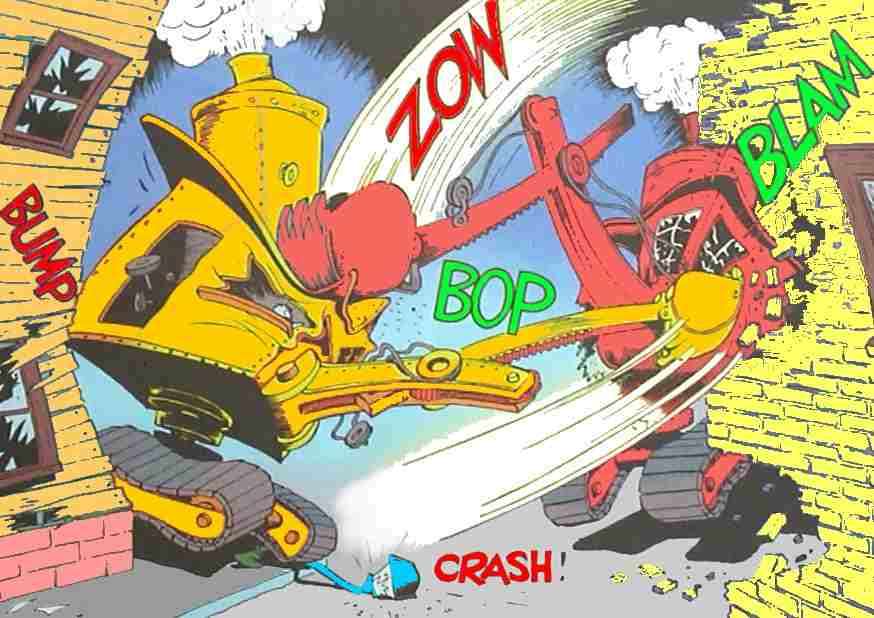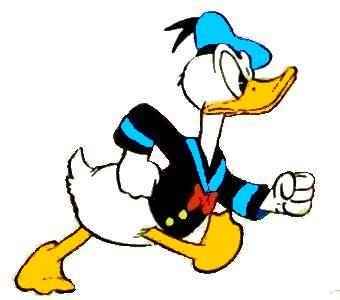Expressions
When you're starting sketching
it is much better to draw the ducks as circles, because
then you get the construction, the basic construction of
the guys. In the next stage their expressions have to be
refined, which is done mostly with patient redrawing and
erasing. When I'm drawing the faces I think about what
their basic emotion is, what they are doing there. Maybe
the little guys are really happy, they think they have
seen a lake of water out in the desert, so I try to show
that emotion in their faces and in their poses, their
eagerness as they look out across the sand and think they
see a lake. They really lean into it. Even their fingers
have to express a certain amount of emotion.
In drawing the ducks faces, I used to act out the
expressions on my own face, all unconsciously. If I had
the ducks angry, I would strain myself to draw their
anger and get the feeling so much that I was grimacing,
and if I had them scared or popeyed, I would draw that
with my eyes wide open and practically imitating the
ducks' expressions, except that I didn't have a beak. And
the result was that I would end up with a headache.
|


